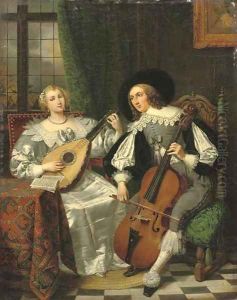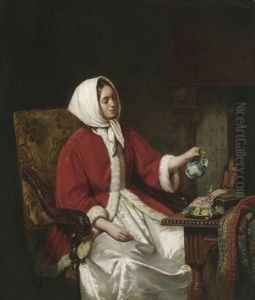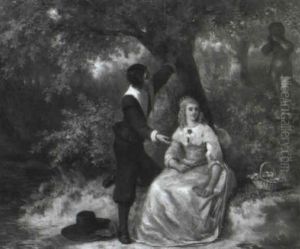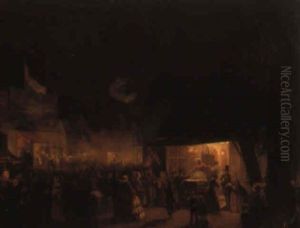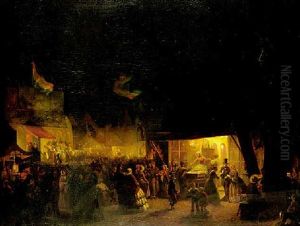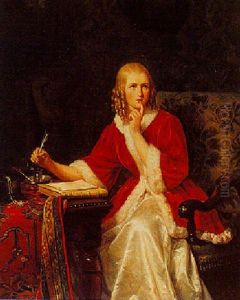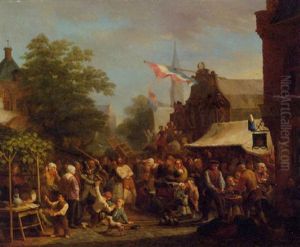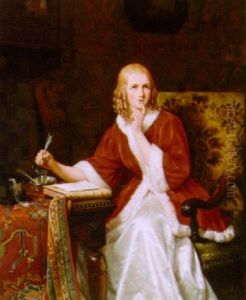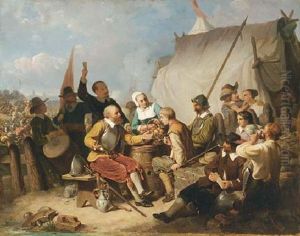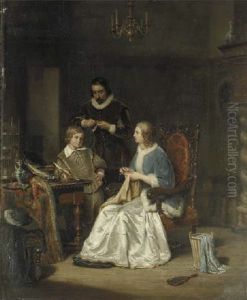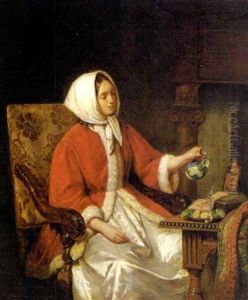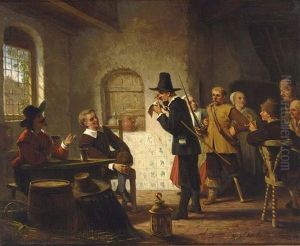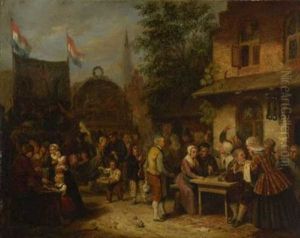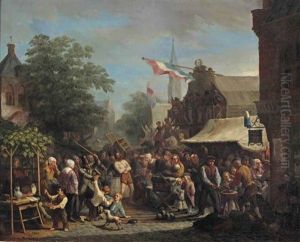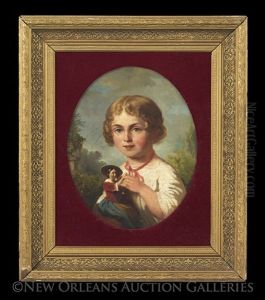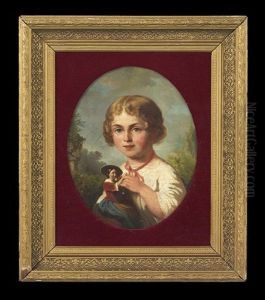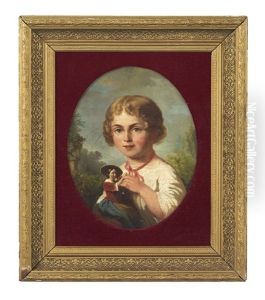David Van Der Kellen III Paintings
David Van Der Kellen III was a 19th-century Dutch artist, renowned for his skills as a medalist, engraver, and coin designer. Born in 1827 into a family with a strong artistic heritage, he was destined to follow in the footsteps of his father and grandfather, both of whom were also named David Van Der Kellen and were respected artists in their own right.
Van Der Kellen's early life was immersed in the world of art, with his father, David Van Der Kellen Jr., being the director of 's Rijks Munt, the Dutch Royal Mint. Under the tutelage of his father, he learned the intricate skills of engraving and medal-making. Van Der Kellen III quickly developed his own artistic style, which was characterized by a meticulous attention to detail and a classic approach to his subjects.
During his career, Van Der Kellen III was appointed as the director of 's Rijks Munt following his father's footsteps, a position that allowed him to have a significant impact on Dutch numismatics. He was responsible for the design and production of numerous Dutch coins, which are now considered to be works of art in their own right and are highly sought after by collectors. His work was not limited to coins, however, as he also produced medals, which commemorated important events and figures in Dutch history.
Apart from his numismatic legacy, Van Der Kellen III's engravings and medals were celebrated for their artistry beyond their functional use. His work was influenced by the movements of his time, including Neoclassicism, which emphasized a return to the classical ideals of beauty, harmony, and proportion. Despite the prominence of industrialization during his lifetime, Van Der Kellen III maintained a commitment to handcrafted artistry, distinguishing his work from the mass-produced items of the period.
David Van Der Kellen III died in 1895, leaving behind a rich legacy of artistic contributions to Dutch culture and history. His works continue to be appreciated by art historians and collectors, who regard him as an important figure in the field of medallic art. His legacy is also preserved through the pieces that remain in circulation, historical documents, and the collections of various museums that house his coins and medals, celebrating the aesthetic and cultural heritage of the Netherlands.
